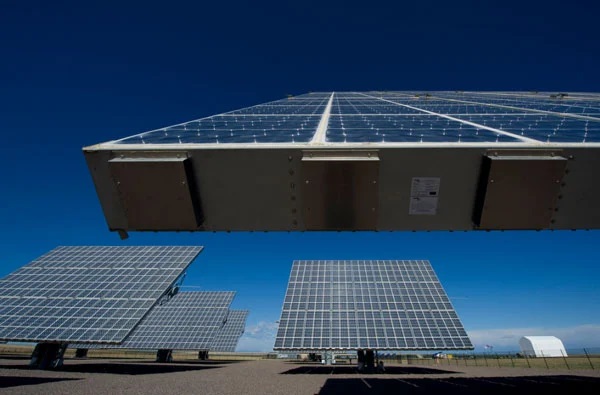Solar panels can be classified according to their internal structure based on the type of photovoltaic (PV) material or technology used to convert sunlight into electricity. There are three primary types of solar panels based on internal structure.
- Crystalline Silicon Solar Panels:
- Crystalline silicon (c-Si) solar panels are the most common type and are further categorized into two subtypes: monocrystalline and polycrystalline.
- Monocrystalline Solar Panels: These panels are made from single-crystal silicon wafers, which are cut from a single, pure silicon crystal. Monocrystalline panels tend to be more efficient and space-efficient than polycrystalline panels but are often more expensive.
- Polycrystalline Solar Panels: Polycrystalline panels are made from multiple silicon crystal fragments. They are less efficient and cheaper to produce than monocrystalline panels but are a cost-effective choice for many applications.
- Thin-Film Solar Panels:
- Thin-film solar panels are made by depositing thin layers of semiconductor materials onto various substrates. There are several types of thin-film technologies, including amorphous silicon (a-Si), cadmium telluride (CdTe), copper indium gallium selenide (CIGS), and more.
- Thin-film panels are generally less efficient than crystalline silicon panels but have the advantage of being more lightweight, flexible, and potentially lower in cost. They are often used in applications where space or weight constraints are significant.
- Multi-Junction Solar Panels:
- Multi-junction solar panels, also known as tandem or multi-layer solar cells, are typically used in advanced or specialized applications.
- These panels consist of multiple layers of semiconductor materials, each designed to capture different portions of the solar spectrum. This allows them to achieve higher efficiency than single-layer solar panels.
- Multi-junction solar panels are commonly used in space-based applications like satellites and spacecraft where space and weight are at a premium.
The choice of solar panel technology depends on various factors, including efficiency requirements, available space, budget, and specific project goals. Monocrystalline and polycrystalline panels are the most commonly used types for residential and commercial installations due to their well-established performance and reliability. Thin-film and multi-junction panels find applications in niche markets where their unique characteristics are advantageous.


